Hovering at the periphery of human consciousness and culture lies the enigmatic symbol of the blue evil eye, a motif as ancient as it is powerful.
This mesmerizing emblem, characterized by its vibrant blue hue, serves as a sentinel against negative energies and ill intentions.
It’s a spiritual shield, an amulet that cultures around the globe have revered and employed for millennia.
From the bustling bazaars of Istanbul to the sun-kissed islands of Greece, the blue evil eye stands as a testament to humanity’s enduring quest for protection against the unseen forces of envy and malice.
Through this introduction, we will unravel the layers of meaning behind the blue evil eye, shedding light on its role as a spiritual guardian and its significance across different cultures and eras.
Blue Evil Eye Spiritual Meaning
Nestled within the rich tapestry of Assyrian culture, a tradition steeped in ancient lore and spiritual wisdom, lies a unique protector against unseen forces—the blue or turquoise bead, often adorned with an arrangement of two, seven, or nine small holes, each resembling watchful eyes.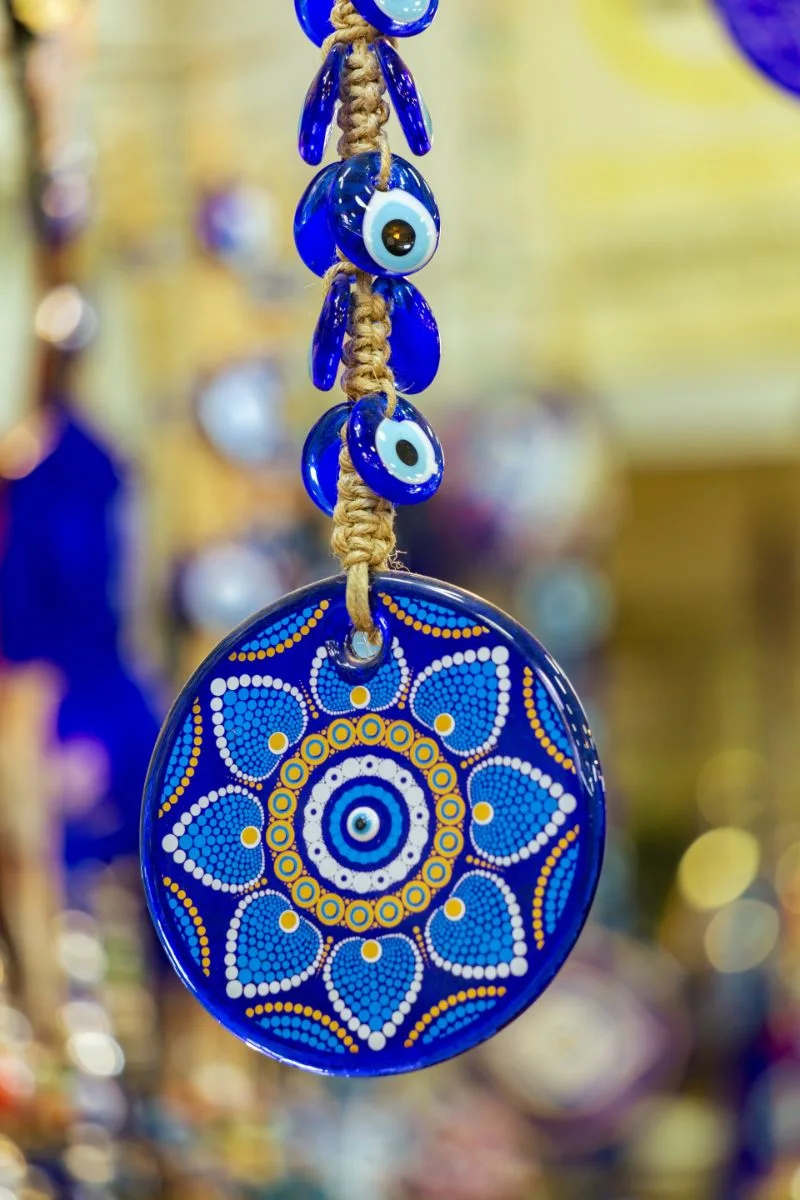
This isn’t merely a piece of jewelry; it’s a talisman, a guardian against the malevolent gaze known universally as the evil eye.
In the heart of Assyrian belief, where history whispers through the sands and stones of Mesopotamia, this amulet serves as a shield, warding off misfortune and ill will directed by envy or malice.
The evil eye, a concept as old as civilization itself, finds a particularly strong resonance among the Assyrians.
It’s a belief that transcends the mere superstition, intertwining with daily life and spiritual practice, offering protection and peace of mind. The choice of blue or turquoise in these beads is no accident.
These colors, reminiscent of the clear sky or the deep sea, are symbols of purity and calm, believed to counteract the negative energy associated with the evil eye.
The holes, resembling eyes, serve as a mirror to reflect any harmful intent back to its source, a concept deeply embedded in the fabric of Middle Eastern and Mediterranean cultures.
But the Assyrians take this a step further, adding layers of ritual to enhance protection. Some may spit thrice, a symbolic act devoid of actual saliva, to strengthen the barrier against the evil eye.
This act, though seemingly simple, carries profound meaning. It’s a declaration of defiance against negative forces, a ritual cleansing of space and spirit.
Interestingly, the Assyrians hold that individuals with green or blue eyes possess a greater susceptibility to the effects of the evil eye.
Perhaps it’s the rarity and beauty of such hues that have historically sparked envy in others, thus making those who bear them more vulnerable to its consequences.
This belief underscores the complexity of the evil eye phenomenon—it’s not merely about warding off external negativity but also navigating the intricate web of human emotions and interactions.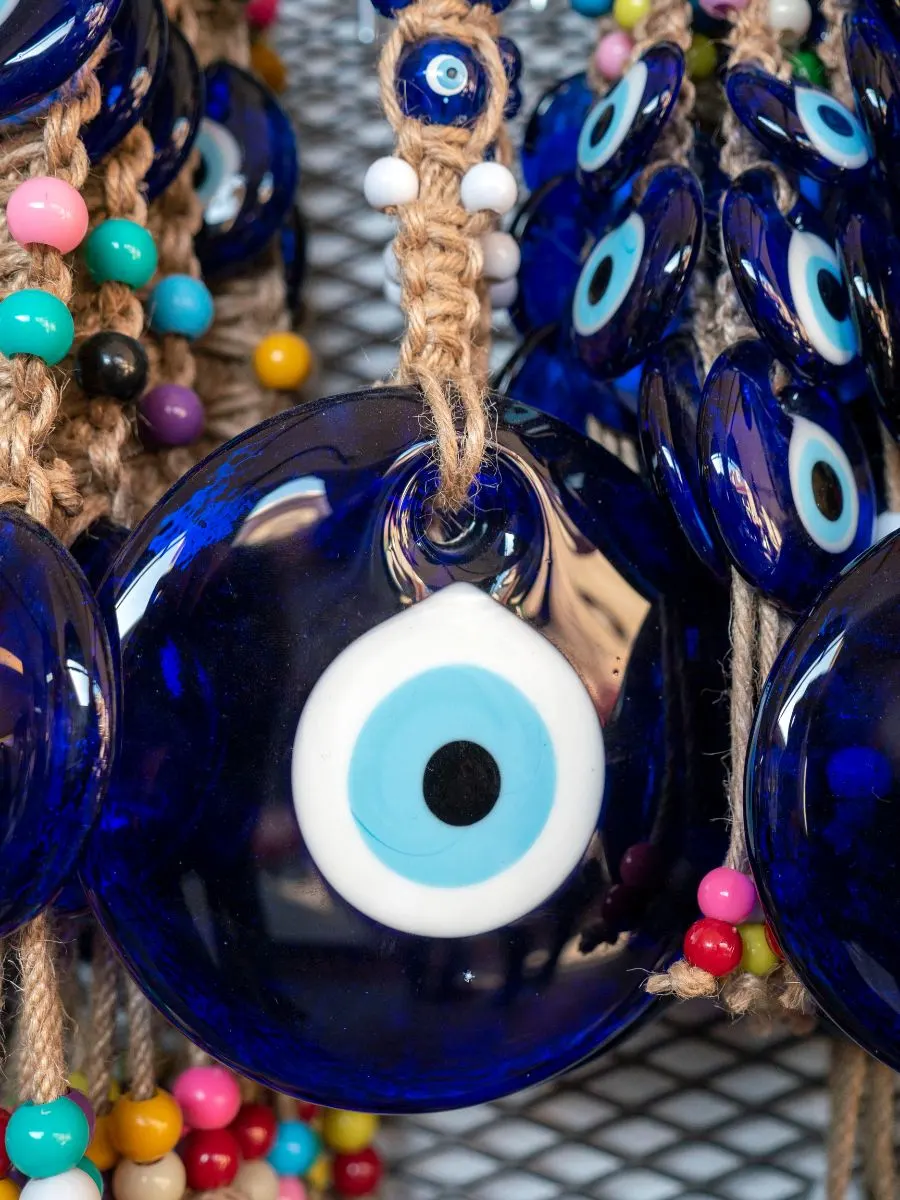
In a world where the interplay of envy, admiration, and malice can often be subtle and nuanced, the Assyrians’ use of the blue bead as a protective amulet speaks to a deeper understanding of the human psyche.
It acknowledges the power of the gaze, the weight of intention, and the vulnerability of the human spirit to energies, both positive and negative.
The Assyrian practice of wearing this amulet is a testament to the enduring human desire for protection and safety in a precarious world.
It’s a reminder that, across cultures and through ages, humanity has always sought ways to shield itself from the unseen forces of envy and spite.
In the blue eyes of the Assyrian amulet, one finds not just a symbol of protection but a bridge to ancient wisdom, a connection to a tradition that views the world as a place where spiritual and material realms intertwine, where the gaze of another can carry weight beyond mere observation, and where protection comes imbued with color, shape, and ritual.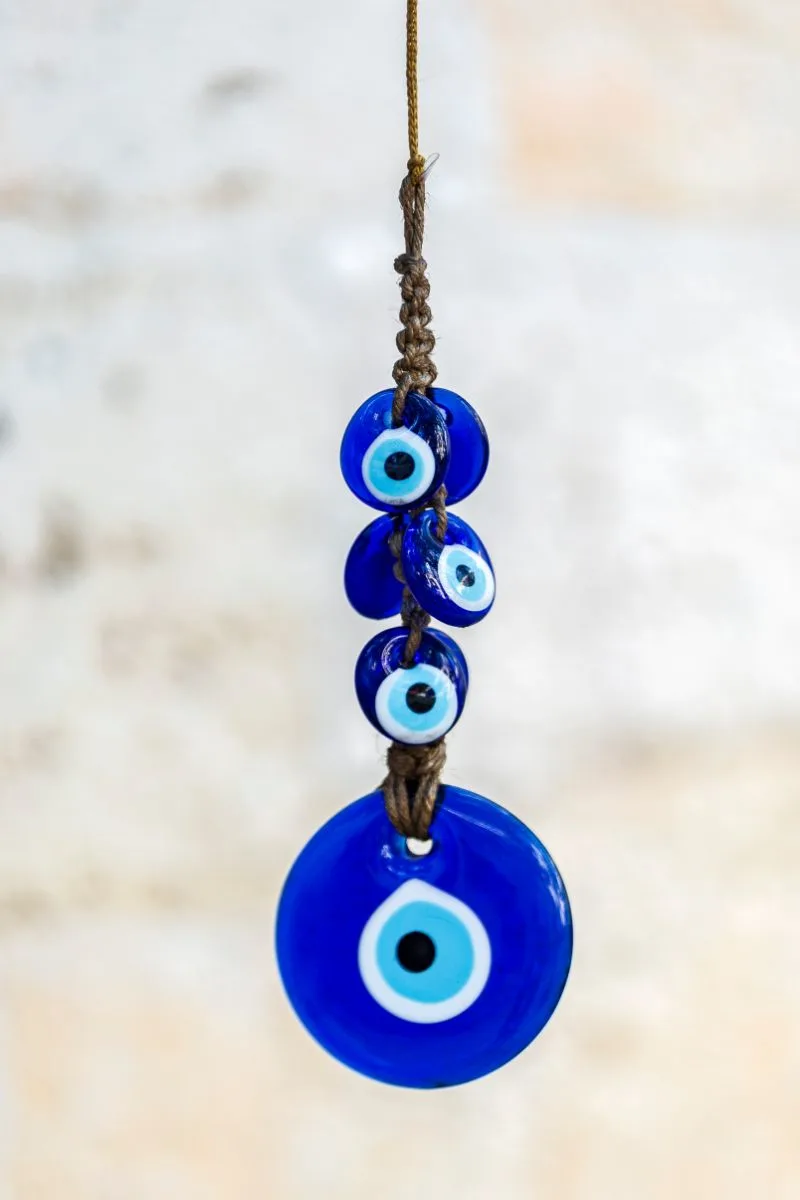
This amulet, therefore, is more than an accessory; it’s a cultural lifeline, connecting the Assyrians of today with their ancestors, providing comfort, continuity, and a sense of belonging in an ever-changing world.
New perspectives
Gazing into the vast expanse of a clear blue sky, one can’t help but feel a sense of limitless possibilities and profound tranquility.
This experience, ethereal in its essence, mirrors the spiritual significance carried by the light blue evil eye—a symbol that transcends mere adornment to become a window to deeper understanding and inner calm.
In the realm of symbols and meanings, colors play a pivotal role, and the choice of light blue for an evil eye talisman is imbued with layers of significance that reflect the natural world’s own palette of peace and protection.
The light blue evil eye, with its gentle hue reminiscent of the early morning sky, serves as a beacon of serenity.
It invites those who carry or behold it to open their hearts to new perspectives, much like the horizon expands at the break of dawn, promising new beginnings and fresh insights.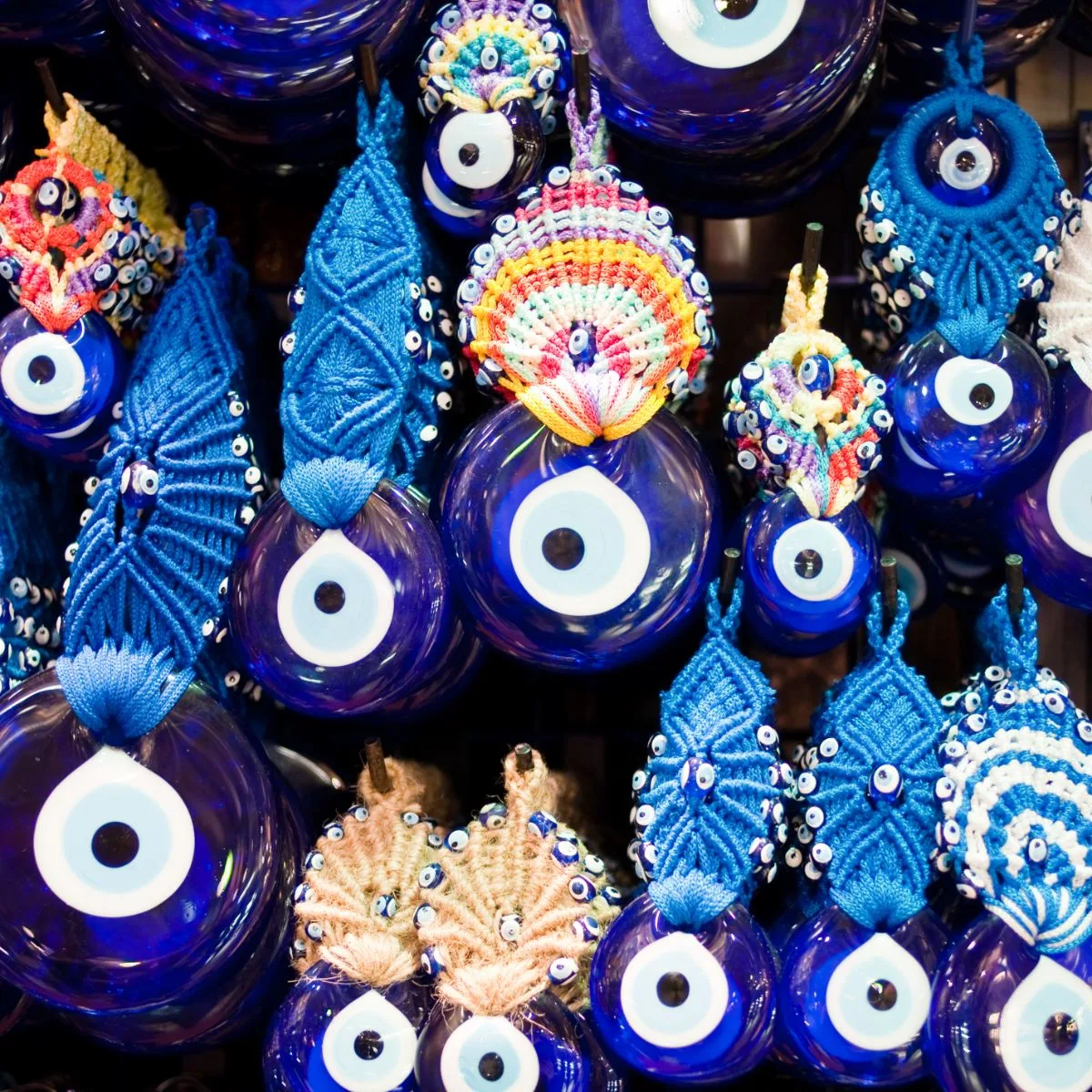
This particular shade of blue holds a resonance with qualities of calmness and clarity, offering a visual antidote to the chaos and noise that often permeate everyday life.
It’s a reminder that, amidst the whirlwind of our daily endeavors, there exists a place of peace within each of us, accessible and pure.
This talisman’s connection with feelings of inner peace is not by chance.
Throughout history and across cultures, blue has been associated with the divine, the infinite, and the profound.
The light blue evil eye, therefore, acts as a symbolic shield, not only guarding against malevolent glances laden with envy or ill will but also against the internal turmoil that can cloud our minds and disturb our peace.
It whispers a silent message of tranquility to the spirit, encouraging moments of reflection and the cultivation of a serene mind.
Furthermore, the light blue evil eye embodies the essence of serenity in its most tangible form.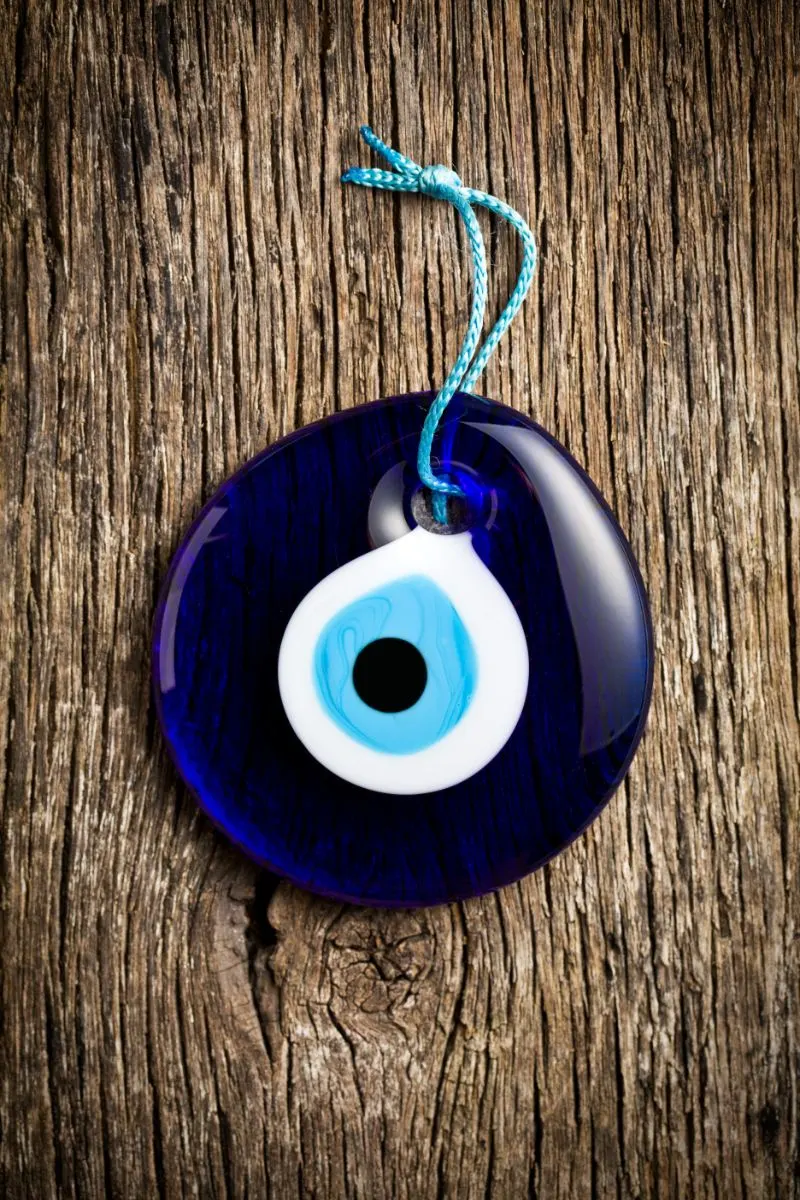
For those who seek a haven from the storms of life, this symbol serves as a constant companion, a reminder that peace is always within reach.
It encourages bearers to look inward, to find the calm amid the storm, and to approach life’s challenges with a sense of grace and equanimity.
It’s an invitation to practice mindfulness, to breathe deeply of the metaphorical clear blue sky, and to allow oneself the space and freedom to grow.
In essence, the light blue evil eye is more than an amulet of protection; it’s a talisman of personal growth and inner peace.
It champions the idea that true serenity comes from understanding and harmony within oneself.
By carrying or wearing this symbol, individuals affirm their commitment to nurturing a peaceful heart, to viewing the world through a lens of compassion and openness, and to walking gently upon the earth.
The light blue evil eye, therefore, becomes a profound spiritual tool, guiding souls toward a path of calmness, clarity, and renewed perspective.
The Science of Belief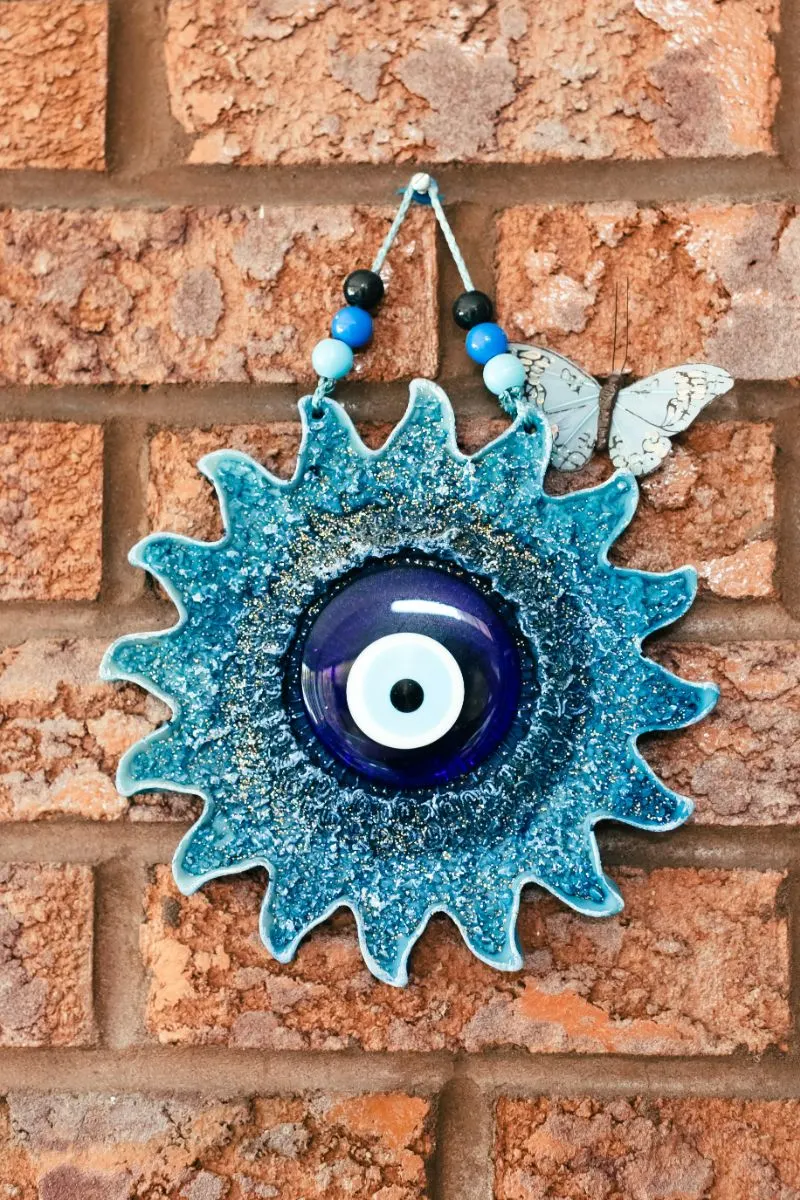
The allure of the Blue Evil Eye, a talisman believed to ward off malevolent stares and negative energies, stretches beyond the realm of folklore into the very fabric of human cognition and societal structure.
The science behind why millions across cultures adhere to the belief in its power reveals a compelling tapestry woven from the threads of psychology, anthropology, and neuroscience.
These disciplines together shed light on the innate human predisposition towards symbolic thinking and the profound impact such beliefs have on our perception of reality.
From a psychological standpoint, the belief in the Blue Evil Eye and similar symbols fulfills a universal human need for control and security in an unpredictable world.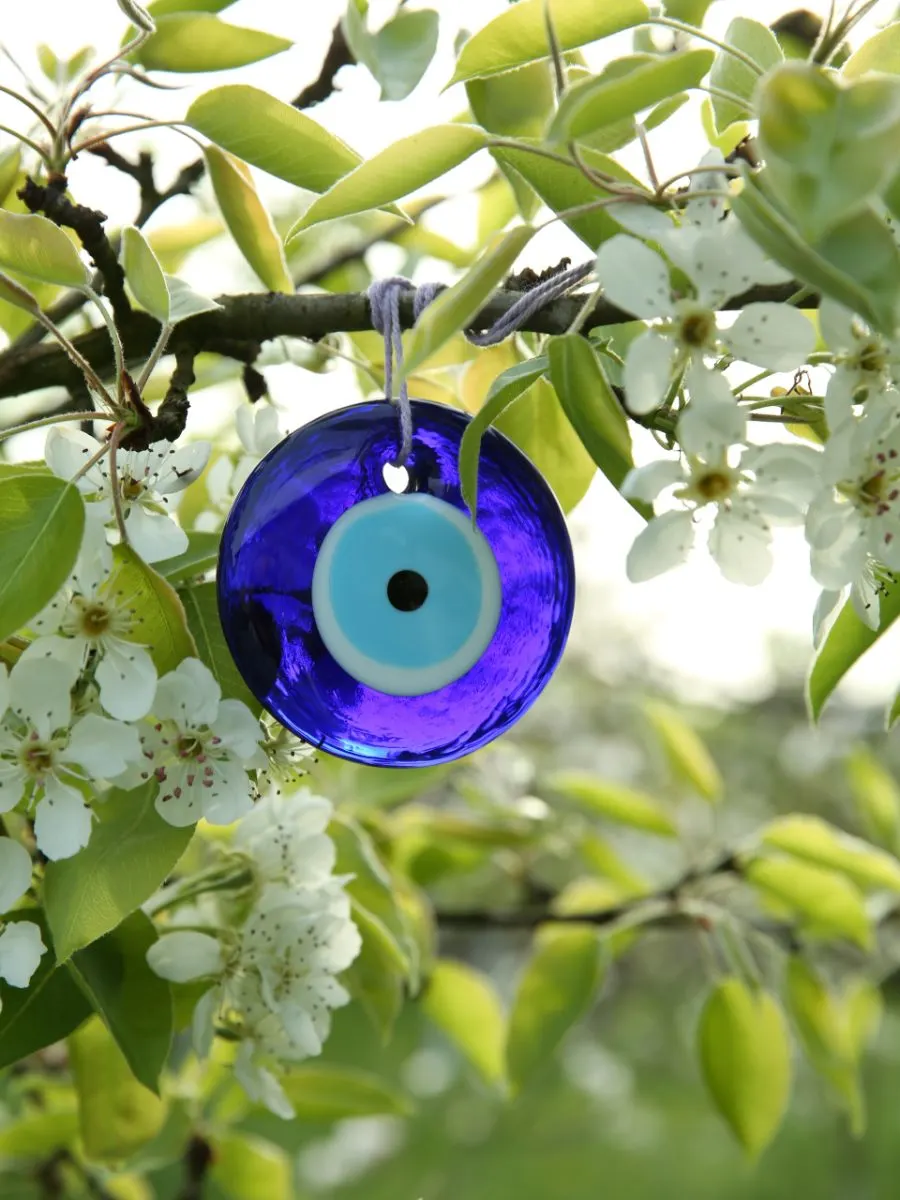
Humans are pattern-seeking creatures by nature; we are inclined to find connections between events, especially when faced with adverse circumstances. The Blue Evil Eye serves as a tangible manifestation of this cognitive impulse, offering a sense of protection and agency over unseen forces.
This psychological anchorage is particularly potent during times of stress or uncertainty, providing comfort and a semblance of order.
Anthropologically, the prevalence of the Blue Evil Eye across various cultures can be seen as part of a broader framework of apotropaic traditions—practices aimed at averting evil or bad luck.
Such symbols function as cultural touchstones, fostering communal bonds and shared identities among those who uphold these beliefs.
They operate within the social fabric to delineate cultural norms and values, including notions of envy, malevolence, and protection. Thus, the persistence of the Blue Evil Eye in cultural consciousness is also a testament to its role in social cohesion and communal wellbeing.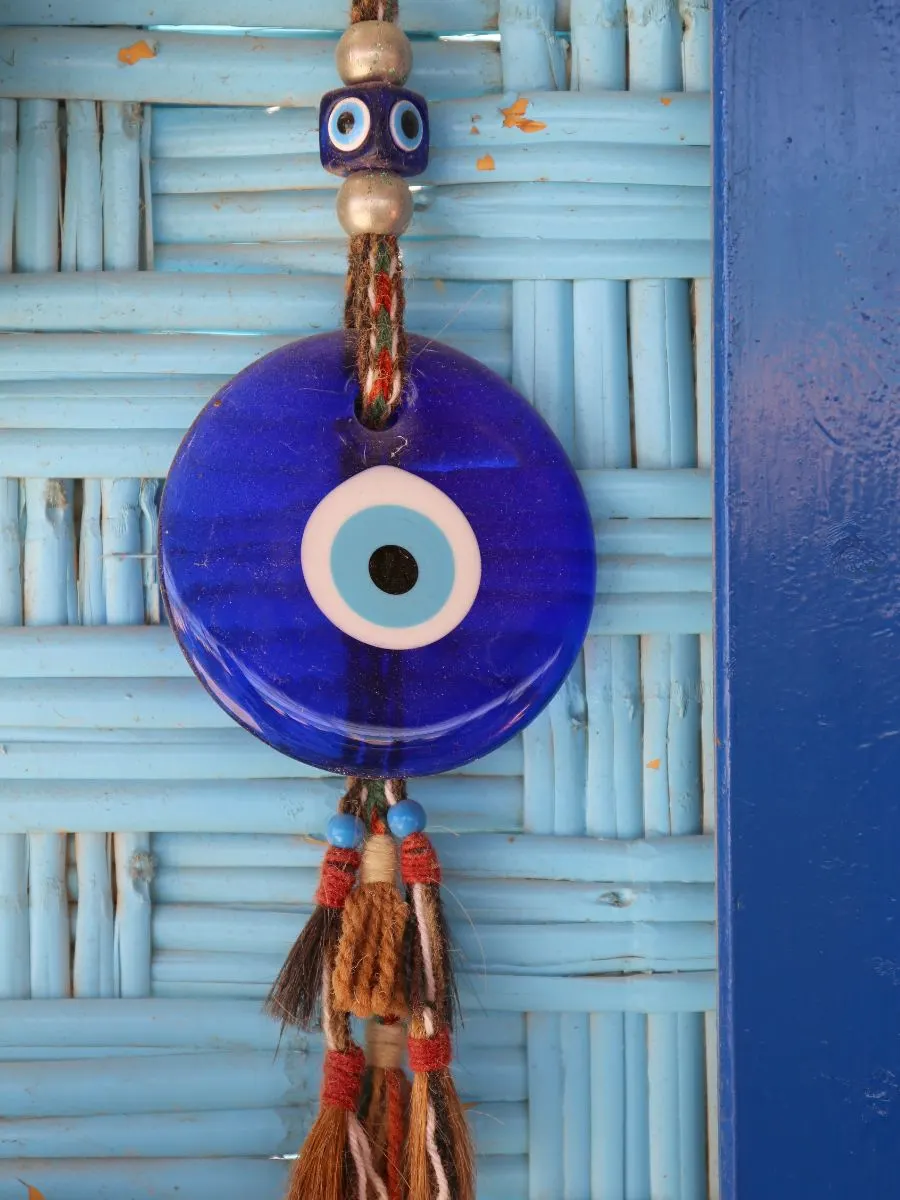
Neuroscientific research further illuminates how beliefs in symbols like the Blue Evil Eye influence our perceptions and interactions with the world. Our brains are wired to imbue symbolic objects with meaning, activating specific neural pathways related to emotion, memory, and decision-making.
When individuals believe that an amulet carries protective powers, this belief can have a placebo effect, altering their emotional state and potentially even their physiological responses to stress.
This illustrates the profound impact of belief on the mind-body connection, underscoring the tangible effects of intangible convictions.
The interplay between these fields—psychology, anthropology, and neuroscience—reveals that the belief in the Blue Evil Eye and similar symbols is far from being mere superstition.
Instead, it emerges as a multifaceted phenomenon rooted in the fundamental aspects of human cognition, cultural expression, and social interaction.
These beliefs shape not only individual attitudes and behaviors but also influence the collective psyche, illustrating the enduring power and relevance of symbols in navigating the complexities of human life.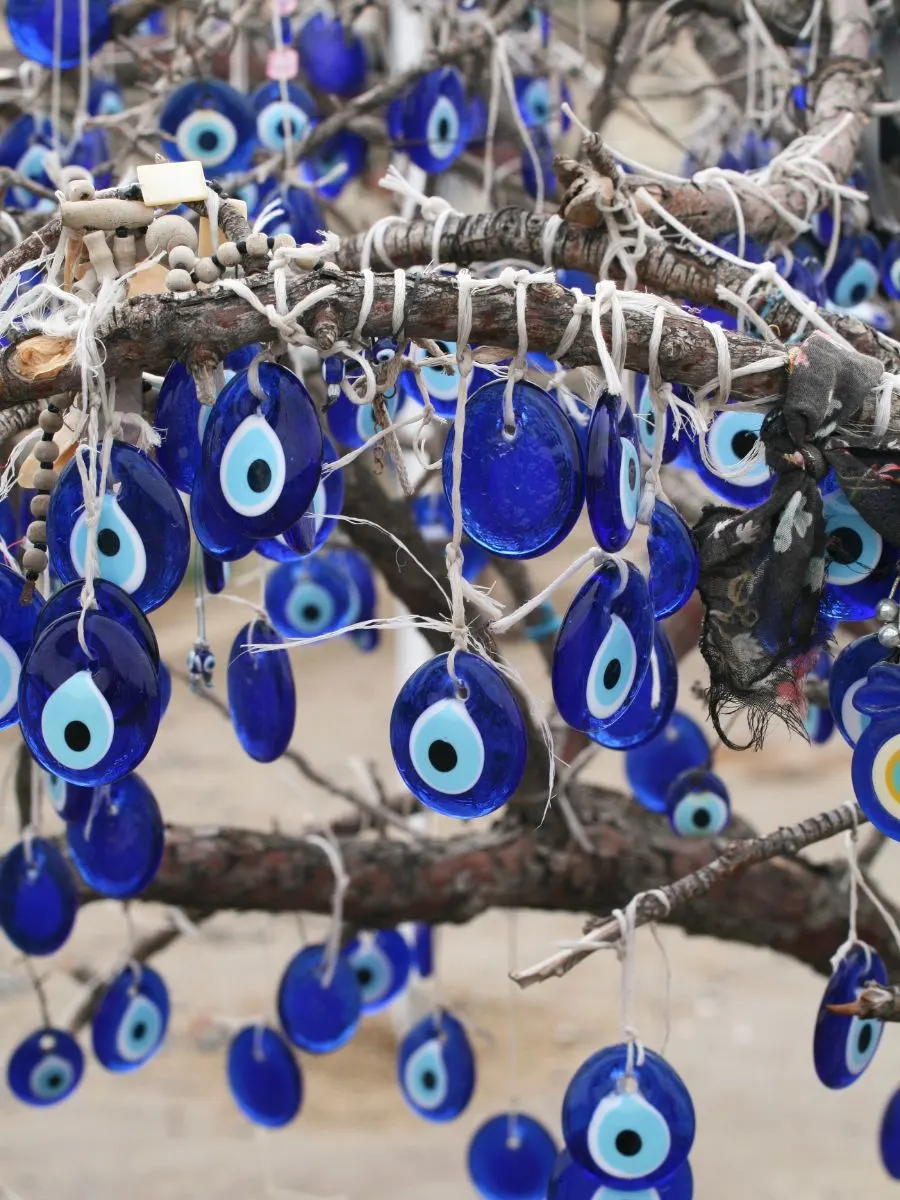
The Blue Eye in Spiritual Practices
The Blue Evil Eye, transcending its common recognition as a mere amulet or decorative element, occupies a profound space within the spectrum of spiritual practices and rituals across numerous traditions.
This symbol, steeped in centuries of lore and mysticism, serves as a focal point for meditation, a tool for healing, and a potent safeguard in protection rituals, illustrating its versatile and deeply symbolic nature.
In the realm of meditation, practitioners often utilize the image of the Blue Evil Eye as an object of focus or visualization.
The serene blue hue, associated with qualities of calmness, clarity, and the infinite, aids in deepening the meditative state, allowing the individual to transcend mundane concerns and tap into a more profound sense of peace.
By envisioning the Blue Evil Eye during meditation, one can symbolically shield their spiritual self from negative energies and thoughts, fostering an environment conducive to inner tranquility and mindfulness.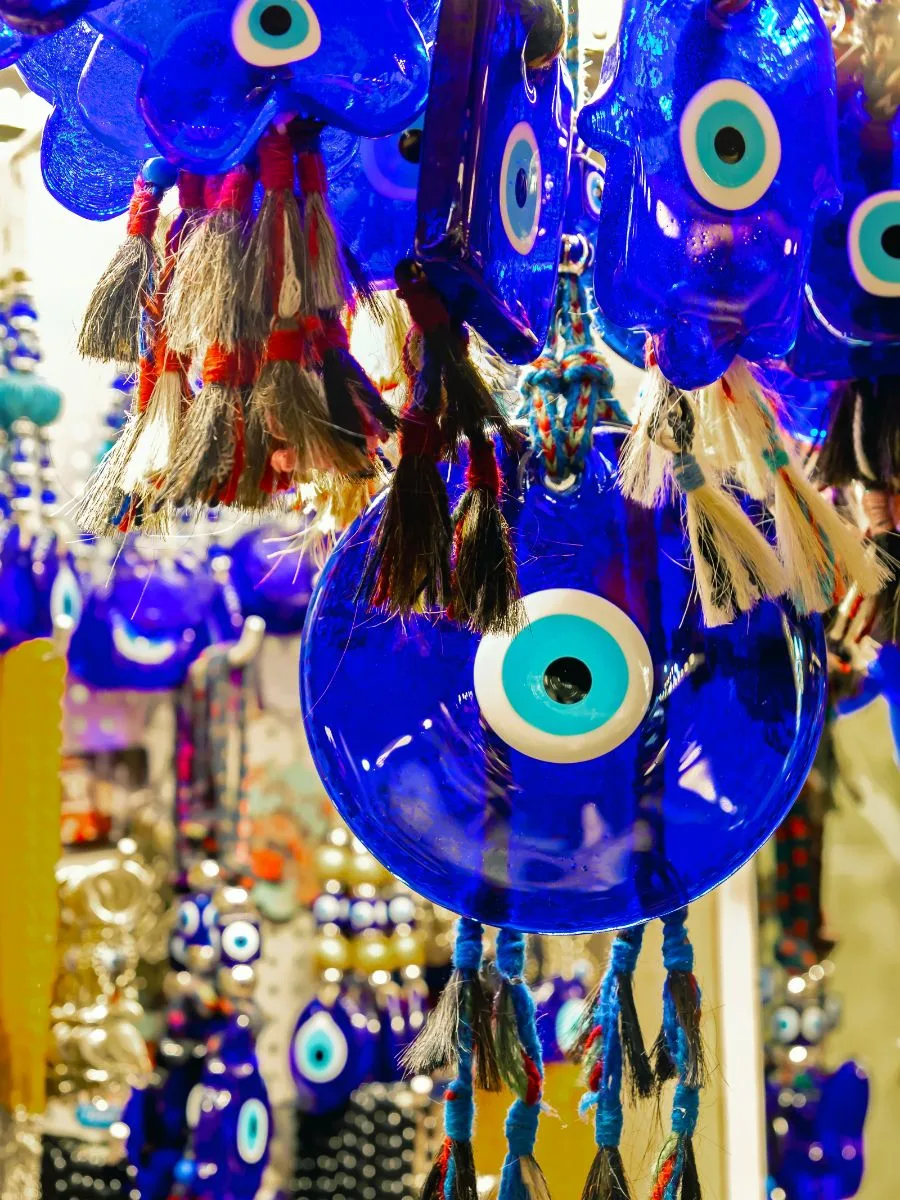
Healing rituals, too, incorporate the Blue Evil Eye in various cultures, acknowledging its reputed power to absorb and neutralize negativity.
In these contexts, the symbol is often integrated into holistic practices aimed at restoring balance and harmony within the body and mind.
Healers may place amulets or talismans bearing the Blue Evil Eye on specific energy centers or chakras of the body to facilitate the release of blockages and promote emotional and physical well-being. The belief here is that by focusing the healing energies through the symbol, individuals can protect themselves against ailments thought to arise from envy or ill will.
Protection rituals, perhaps the most direct application of the Blue Evil Eye’s symbolism, leverage its reputed ability to guard against malevolence in its many forms.
These rituals vary greatly across different cultures and spiritual paths but commonly involve the consecration and placement of the Blue Evil Eye amulet in strategic locations—be it within homes, vehicles, or personal belongings—to ward off the gaze that brings misfortune.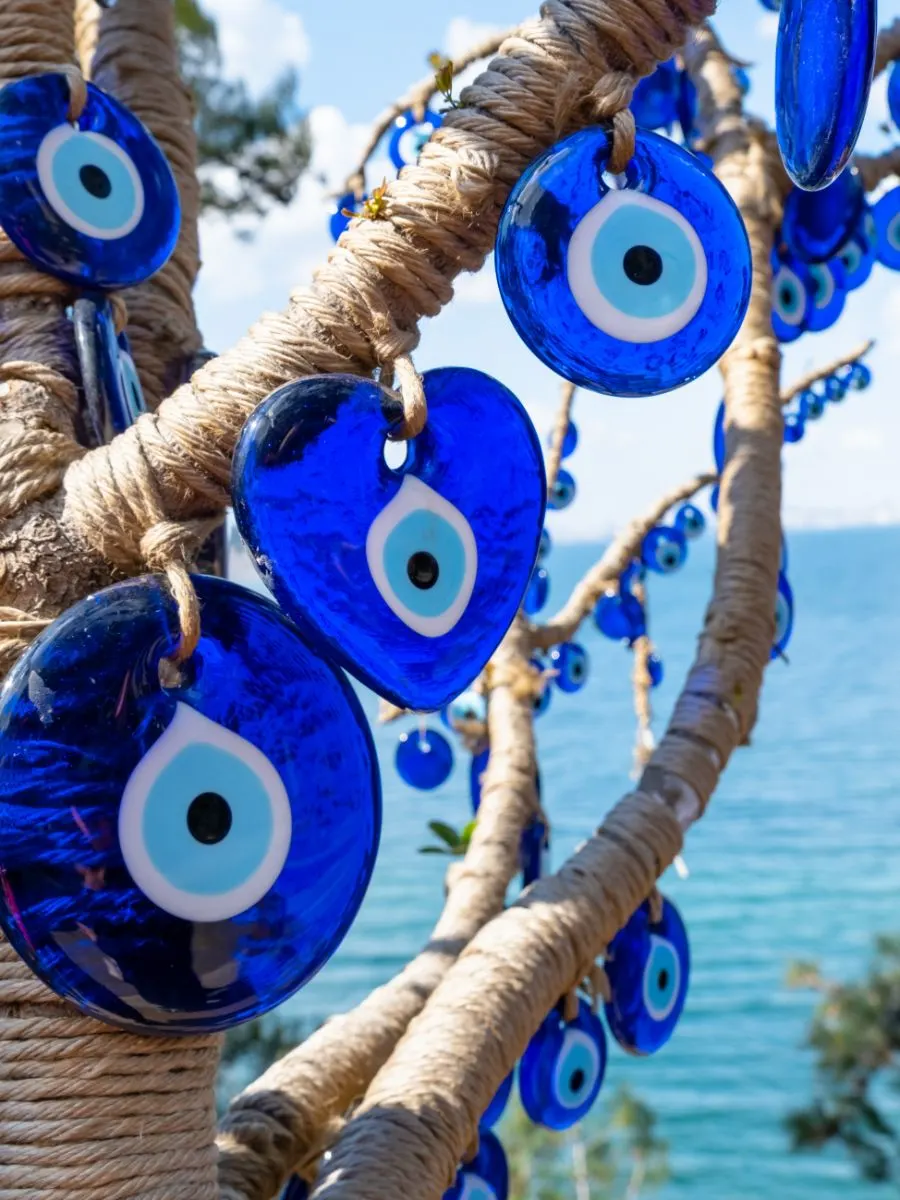
Some traditions incorporate chants, prayers, or the burning of sacred herbs alongside the display of the Blue Evil Eye, amplifying its protective aura and creating a spiritual barrier against negativity.
Furthermore, the Blue Evil Eye’s role in communal and personal rituals underscores the collective aspect of protection and well-being. It’s not uncommon for the symbol to be gifted as a token of goodwill, embodying wishes of health, prosperity, and divine safeguarding.
This exchange ritualizes the communal bonds and shared understandings of protection, embedding the Blue Evil Eye within the social fabric as a guardian symbol.
What emerges from the exploration of the Blue Evil Eye in spiritual practices is a multifaceted symbol that resonates with universal themes of protection, healing, and spiritual insight.
Its integration into meditation, healing, and protection rituals reflects not only the depth of belief in its power but also the human urge to connect with symbols that transcend the physical realm to touch the spiritual.
Through these practices, the Blue Evil Eye continues to serve as a beacon of hope, a means of alignment, and a shield against the unseen forces that shape our lives.
